Ask the experts: women and girls in STEM

In our first ‘Ask the experts’ feature and in collaboration with Women in 3D Printing, we spoke to the experts about where we are with women in 3D printing in medical specialisms and where the conversation should be steered from 2020 and beyond.
If you missed our International Women’s Day Twitter chat, #TalkIWD20 on Friday 6 March 2020, catch up now via the hashtag.

To commemorate International Women’s Day (8 March 2020), 3DMedNet has put together our first ‘Ask the experts’ feature in partnership with global organization, Women in 3D Printing.
While many areas of inequality exist across medicine, engineering and academia, we asked a small cross section of women working with medical 3D printing technologies to share their perspectives for a 360° opinion piece.
Join the conversation and share your thoughts in the comments or catch up on our highlights from the Future Science Group #TalkIWD20 via the hashtag.
Jump to section:
- How do we encourage more women into STEM fields? Once there, how do we encourage them to stay?
- Do you have a network of women in STEM around you? If so, how did you go about creating or finding that network, and what are the benefits of being a part of a sub-community?
- What contributions do you feel that you’re able to make now to help STEM women and women who are considering STEM careers?
- Why is it so difficult to move towards a more diverse and equitable landscape?
- Are you involved with or can you recommend any organization(s) or places to go to find out more about supporting women, diversity and inclusion in STEM?
- Who is your STEM role model and why?
- What is next for women, diversity and inclusion in STEM? Where should we be steering the conversation from 2020 onwards?

- Amy Alexander, Senior Biomedical Engineer, Mayo Clinic (MN, USA)
- K. Banu Kose, Lecturer in Engineering and Natural Sciences, Istanbul Medipol University (Turkey)
- Kadine James, Creative Tech Lead, Hobs 3D (London, UK) and UK Chair of Women in 3D Printing
- Joyce Lim, Consultant Pediatric Cardiologist, Alder Hey Children’s Hospital (Liverpool, UK)
- Candice Majewski, Senior Lecturer in Mechanical Engineering, University of Sheffield (UK)
- Georgi Makin, Senior Editor, 3DMedNet (London, UK)
- Lorna Marson, Professor of Transplant Surgery, University of Edinburgh (UK)
How do we encourage more women into STEM fields? Once there, how do we encourage them to stay?
Amy Alexander: I think, what we need to be doing is engaging young women when they’re still figuring out what they like and what they’re good at. A lot of the time, you go through middle and high school and you’re forced to make a decision about college and university, but you may not have even been exposed to all of the potential options for your career. I think that just knowing that something is out there is extremely beneficial.
I think it’s important to reach young women at the middle school and the high school levels for sure, and let them know that this is something that they can go into.
Candice Majewski: Having visible role models people can relate to is a huge part of this. If girls grow up without ever seeing women in STEM, if children with disabilities grow up never seeing a disabled scientist, or black children only ever see white engineers, it’s much more difficult for them to see themselves doing those things. We’re starting to see a number of initiatives spring up that are helping show a broader view of who can be a scientist (spoiler alert: anyone can!), and I think this is starting to spread the word. A couple of my favourites are 500 Women Scientists, which, among other things, maintains a database of women scientists who are happy to be contacted on specific subjects, and Skype A Scientist , which matches scientists with classrooms around the world for Skype conversations.
Convincing people to stay is more about the environments we create in academic and work environments; there’s a difference between telling someone they’re welcome and actually making them welcome. Do people feel valued as individuals and for the contribution they make, or are they made to feel like the ‘token’ minority person? Much of the time someone from an under-represented group will spend a lot of extra time and energy helping to address diversity and inclusion issues (making the case for policy changes, sitting on relevant committees etc.) At the very least it’s important to make sure this is recognised when considering other workload and career progression.
Cracking down on bullying and harassment and setting expectations for how people should treat each other is an important part of this, but it’s also important to watch out for the smaller things which can make people feel under-valued. Perhaps it’s slipping into stereotypes of gender roles (always asking a woman to take minutes or to clear up after a meeting), or always organizing social events at a time that excludes people with parental or caring responsibilities. It might also be as seemingly obvious as booking meetings in a room which is not accessible, when you have attendees with disabilities. Keeping an eye out for these things is one way we can all help create an environment that works for everyone.
Kadine James: Showing young people that there are multiple careers and pathways into AI, arts, additive manufacturing, science and tech whilst they are in primary and secondary school and ensuring that we embed STEAM in the National Curriculum. We need to develop new and innovative ways to encourage children, teachers, and parents at primary school level to get interested in STEM as well as embedding the skills and attributes required to actively participate in the fourth industrial revolution. This includes finding new ways to embed practice within the strict confines of the primary school curriculum and to seed, grow and maintain children’s interest in STEM through to secondary school.
Rapid technological innovation, globalization, demographic shifts, climate emergency and geopolitical transformations are having an unprecedented impact on the world of work and skills landscape. New technologies such as 3D printing have brought a wealth of exciting opportunities, both for business productivity and for the workforce in terms of replacing unhealthy, dangerous and repetitive tasks with high-skilled work. However, the cognitive abilities and tasks that were once thought to be reserved for humans are increasingly being carried out by AI and machines, there is a growing concern about the impact that this will have on jobs and future workforces and the subsequent risks for government, business, and people.
Mentoring and nurturing talent is equally important, I want young women to know that regardless of their background they are capable of doing absolutely anything that they put their minds to. I say to all those young girls out there that want a career in tech to believe in all your capabilities. Get out there and make things happen, don’t wait to be invited!
Do you have a network of women in STEM around you? If so, how did you go about creating or finding that network, and what are the benefits of being a part of a sub-community?
Lorna Marson: I do have a network of women in STEM around me. I have been involved in the Athena SWAN Initiative at the University of Edinburgh, which is really an initiative exactly around promoting women in science, technology, engineering and medicine. In particular, obviously for me, medicine. I hadn’t appreciated how important having such a community was until I started getting involved in that.
As a surgeon, I work in a very male-dominated speciality, particularly in transplant surgery where less than 10% of transplant surgeons in the UK are women. So it’s been great to have a group of women at quite a senior level around me to discuss the challenges and the opportunities that are open to us in a way that I hadn’t appreciated I needed.
K. Banu Kose: I attach great importance to the formation of local groups, coming together to produce solutions, sharing findings and plans by communicating with similar networks of women in STEM. There are small but significantly important groups that I am involved in. I am happy to be a part of the steps taken to create collective awareness in this regard. I think it is important to create a collective consciousness to produce realistic solutions.
What contributions do you feel that you’re able to make now to help STEM women and women who are considering STEM careers?
Candice Majewski: It can be hard for people to bring up about gender- or other equality and diversity-related issues, without being made to feel like they’re being ‘difficult’. In particular, people at an early stage of their careers and/or in non-permanent positions may worry that speaking out will have a negative effect on their career progression. Since becoming an academic (and having a permanent position) I’ve gradually found it easier to stand up for these things on behalf of other people. I think we also have a responsibility to speak up for members of groups we don’t naturally fall into, which means trying to learn about the barriers others encounter that we don’t personally experience.
I have also found mentoring to be a really valuable and rewarding activity. Whether it’s helping someone with a specific problem or activity, more broadly as a sounding board outside of their direct line management, or simply encouraging them to be more confident in themselves and their abilities, I have realized it’s possible to make a real difference. At the same time I’ve found that mentoring someone has often taught me something about myself and others, which is an unexpected by-product of the whole process!
Kadine James: Having role models that are kind, supportive and visible is essential. I want to do as much as possible to support the next generation of female digital leaders by passing the baton and opening up as many doors as possible.
It’s a huge honor to head up the UK chapter of Women in 3D Printing. Our aim is to inspire, promote and support women who are using additive manufacturing technologies and to increase the visibility of the extraordinary females working in the additive manufacturing industry. We shine a bright spotlight on the work that women are doing across multiple sectors and industries. Our community continues to grow across the UK and it’s so inspiring to be a part of this worldwide platform that supports the diversity and digital skills agenda by creating more opportunities to bring female talent into our industry. Diverse teams allow organizations to provide environments that cultivate more creativity and new ways of thinking; this allows for more innovation and productivity. With no sign of the additive manufacturing industry slowing down, it’s becoming increasingly important to deliver change and commit to a bigger vision that diversity and inclusion produce better results.
Lorna Marson: The other parts of the work that I do around this is really around working to support and inspire the next generation of doctors and surgeons – particularly women – to really empower them to believe that they can do what they want to do, that they don’t have to be limited by the options that are open to them because of other constraints, such as family life, that they also might want to pursue.
I use my own example of having trained part-time in surgery, having two children and bringing them up whilst also being a transplant surgeon as an example for them, because there aren’t many examples around that.
K. Banu Kose: Since I have been in the academy, I have had the chance to work with, help, motivate and encourage the girls in what they want to do, following their STEM interests. I prefer to organize scientific festivals for female students in high school, in laboratories, in the fields of engineering, medicine and science, giving seminars and the opportunities to meet women who do their job happily and successfully to help them build a belief that they can pursue STEM subjects.
I believe that increasing the prevalence of knowledge and audibility of the work we do, facilitating the reach to young people, will set things on their way. It is also our duty to sow the seeds of courage and to make them ready for a more favorable environment than we experienced. Wrong judgments imposed from a young age are keeping young women away from these issues. One of my duties is to encourage them to love science and maths, giving them a taste of STEM with small doses, step by step.
What should be done in the long term to increase partipication in STEM is the reflection of this culture in kids’ games, toys, cartoons, video games and story books. Why shouldn’t stories be created to inspire their imagination, including keywords and topics that encourage science and engineering?
Why is it so difficult to move towards a more diverse and equitable landscape?
Candice Majewski: For me there are a couple of main hurdles we have to get over before we’ll see real movement in terms of equality, diversity and inclusion (EDI). The first is getting people to understand that there are inequities in the system in the first place. I think it’s easy to dismiss things we haven’t experienced ourselves, or where we are in the position of greater privilege. It’s also still pretty common to hear the words ‘yes, but we need to get the *best quality* candidates, as people assume that working on EDI means taking lower quality people. In reality, all we’re really trying to do is to even the playing field a little and work towards everyone having the same opportunities.
The second is accepting that it will be difficult. There’s plenty of evidence that having a diverse team leads to better results and outcomes, but we can’t just say the words and hope we get better! Many of the issues in this area are embedded so firmly in our systems (and often in our society), that they will need substantial effort in order to change things. Committing the appropriate time, energy and resources will be really important if we want to see real change.
Are you involved with or can you recommend any organization(s) or places to go to find out more about supporting women, diversity and inclusion in STEM?
Amy Alexander: I’m involved with the Women in 3D Printing group, which is worldwide. I am also involved in a couple of local organizations.
I encourage people to dig locally. There’s so much that we can do for our communities. Even just offering to go and give a 20 minute presentation to the high school students and middle school students I think is really important, and teachers at that level will almost never say no to something like that to help expose the children they’re bringing up to the opportunities.
K. Banu Kose: I am a member of an excellent Turkish platform, Bilim Kadinlari (Women of Science). also follow the activities of and try to contribute to the international platform, Women in 3D Printing.
Kadine James: Platforms like Women in 3D Printing are doing excellent work here in the UK to inspire, encourage and support more women and girls into the AM industry, we most certainly need more kind women and diverse voices in the tech world and in the boardroom. At Hobs 3D we have recently opened a 3D digital skills academy in partnership with London Legacy corporation, Ravensbourne University and The Mayor of London’s digital talent program this will create jobs and career opportunities for Londoners and drive social mobility through targeted upskilling and reskilling programs, we are creating common standards and certifications around new digital skills, and developing reskilling and redeployment ecosystems that will ensure that workers can stay employable in the new world of work.
Georgi Makin: Having worked with Women in 3D Printing, I would definitely recommend joining the group for regular meet-ups, information around panels at conferences and to tap into a healthy resource for supporting women in this area. I am a huge fan of the Twitter-based group, TIGERS (The Inclusion Group for Equity in Research in STEMM), and have actually found useful resources myself through relevant lists and groups on Twitter. There are many groups in this area working on many different platforms, but I have found that a great place to start when looking for resources or for more information is actually, locally. Many institutions and areas have groups dedicated to developing diversity and inclusion initiatives.
Who is your STEM role model and why?
Candice Majewski: I have never been able to pick one person for this, so instead I’m going to give a shout out to the whole TIGERS group, which I’m a member of. This group initially came about following a successful request through the House of Commons Science and Technology Committee’s #MyScienceInquiry initiative, to launch an investigation into the effects of science funding policy on diversity and equality in the research landscape. Since then we’ve been involved in a lot of other related activities and I’ve been hugely inspired by the amount of energy and dedication our members have, not just to fight for the big things but also to support individuals. I have found so many role models within the group, from all different backgrounds, and I’ve learned a huge amount from them; in particular the patience and kindness with which certain members of the group have helped me with this has been incredible. It can be difficult to know where to start, so I’ve also written a short blogpost with some thoughts from my own experience of this.
Joyce Lim: Well, if you want to talk about female role models, I have been particularly impressed with this particular cardiac surgeon. Male cardiac surgeons, don’t kill me for this, but her name is Kirsten Finnegan. She is a Consultant Cardiac Surgeon based at Starship Hospital in Auckland, New Zealand. When I first met her, I was in awe of her ability, because prior to that, I had only really seen male cardiac surgeons. In a very male-dominated faculty, to see a very accomplished female cardiac surgeon was just amazing.
Kadine James: Bioprinting, although a new field, has already produced many promising areas. Bioprinters could create skin transplants perfectly suited to a patient’s injury, matching the depth and shape needed. They could also print all three types of skin cells, meaning that even severe burns and cuts can be treated this way. I would like to highlight the excellent work that Pamela Swiatlowska and her team at Imperial College (London, UK) are carrying out in this space along with the outstanding work of Wai Yee Yeong, Associate Professor at Nanyang Technological University (Singapore) and TCT Women in 3D Printing Innovator Award Winner.
I had the pleasure of presenting Yeong with the award for innovation at last year’s TCT awards. Yeong is the Program Director at the Singapore Centre in 3D Printing (SC3DP), one of the world’s leading university research labs in 3D printing and is doing outstanding work. Supporting the next generation of scientists and doctors, Yeong is a true inspiration.
Georgi Makin: Like Candice, I struggle to pick a single female role model in STEM as I find that my role affords me the huge privilege of working with inspiring women in 3D printing and STEM on a daily basis (classic examples of which have been included in this interview!).
Outside of 3D printing, I would like to highlight Jess Wade (Imperial College London, UK), who has been working tirelessly to reduce the representation gap of scientists from under-represented communities with complete biographies on Wikipedia. I think I read somewhere recently that Wade has managed to add around 900 biographies to Wikipedia since starting her work at the beginning of 2018!
I would also recommend a little bit of reading around the area from female authors, with my favourites including Angela Saini’s ‘Inferior’ and ‘Superior’, as well as Gina Rippon’s ‘The Gendered Brain’.
K. Banu Kose: My STEM role model is Professor Banu Onaral. Onaral brings together the groundbreaking research, combining technology and medicine with her interdisciplinary biomedical research projects and multinational innovation studies at Drexel University (PA, USA). I hope to be as successful scientist as her. In addition to the fact that my name and field of work are the same, I want to have an active and productive role in the field of medical engineering and able to be regarded as a role model.
What is next for women, diversity and inclusion in STEM? Where should we be steering the conversation from 2020 onwards?
K. Banu Kose: There are statistical studies that suggest that female students rate their own abilities at a lower than realistic level when girls and boys with equal mathematical skills were asked to indicate how they see themselves in this field. I think the issue that we should focus on in the coming days – regarding the education of younger girls – is to instil a conscious awareness of themselves and what they can achieve to allow them to deal with the challenges they may face more confidently and decisively. I am happy to see that the misguided approach in identifying the STEM field with masculine features now appears to be coming to an end and I believe that there is still a lot we can do to accelerate this process. It will take time for these difficulties associated with gender imbalance in STEM to disappear.
Kadine James: Industry and academia need to work closely together to address the digital skills gap and digital exclusion rate – we have over 12 million people in the UK not being able to perform basic online skills. The lack of basic digital skills and access in already disadvantaged areas is likely to lead to an increase in inequality of opportunity and more must be done by government, academia and industry to address this.
Candice Majewski: To put it bluntly, I think the conversation has probably been going on for much longer than it should have. We have been talking about the need for improvements in these areas for ages and yet we’re still not seeing anywhere near enough progress. What I hope for us to see in 2020 is action – commitments by individuals, institutions and organizations to specific actions and policies to help us improve much more quickly. I cannot help thinking that if enough of us stand up and shout about it, we might actually see this happen!
Meet the experts
Amy Alexander
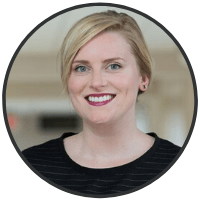
Amy Alexander is a Senior Biomedical Engineer in the Mayo Clinic Department of Radiology’s Anatomic Modeling Lab in Rochester. In her role, Alexander converts 2D radiological images into 3D models and patient-specific surgical cutting guides. These life-size, patient-specific models and guides help surgeons from different specialties prepare for complex procedures. Additionally, these 3D prints form a communication bridge for patients regarding their personal surgical plan. Alexander holds a Bachelor of Science in Biomedical Engineering from the Milwaukee School of Engineering (WI, USA) and a Master of Science in Engineering Management from the Milwaukee School of Engineering Rader School of Business. Alexander has served on the SME Medical 3D Printing Workgroup (MI, USA) for over 3 years, is a member of the Radiological Society of North America’s 3D Printing in Medicine Special Interest Group (IL, USA) and is certified in Additive Manufacturing through SME. Alexander is an active member of Radiological Society of North America, Healthcare Information and Management Systems Society, and SME.
Interviewed at 3DMedLIVE 2019: 3D printing in surgery, Alexander shares her thoughts on encouraging women into STEM fields as well as what we can do at a local level to engage with women in STEM initiatives.
K. Banu Kose
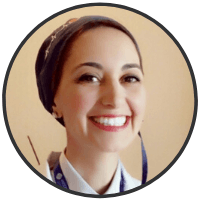
Banu Kose is a Lecturer in the Engineering and Natural Sciences Department at Istanbul Medipol University. Kose has a background in physics engineering (BSc), genetics engineering (MSc) and biomedical engineering (Ph.D.). Kose has 8 years of experience with 3D anatomical modeling, 3D printing, surgical planning, medical device design, finite element analysis and cardiovascular engineering at Medipol University’s Medical Department.
Kadine James
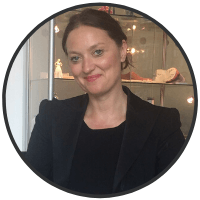
Learner, maker, innovator and 3D technology enthusiast, Kadine James is the Creative Tech Lead at Hobs 3D and is a prominent UK tech evangelist. Combining 7+ years’ experience in 3D printing, virtual reality, augmented reality and mixed reality, James is driven by big ideas, a global mind-set and empowering the use 3D printing in art and architecture. She sets out to create a platform for 3D printing VR/AR/MR learning opportunities for young people to get involved with 3DTech in central London, at Hobs 3D’s hub and incubator for thought leadership.
James has co-produced the largest VR Master Plan Projects in the UK, also curating 3D printing and VR projects for public realm alongside leading contemporary artists, architects, creatives, designers, engineers and industrial designers.
James sits on the Tech and Media Boards at Ravensbourne University (London, UK) and is the CEO and Founder of the Immersive Kind Collective (London, UK), a platform which brings together artists and creatives that are using emerging technology in their practice.
James is UK Lead of Women in 3D Printing, a global platform which inspires, encourages and supports women working with rapid prototyping technologies – and is one of the first Industry Champions for the Creative Industries Policy & Evidence Centre network (led by Nesta). James is listed as one of the top 100 most influential women in UK Tech.
Joyce Lim
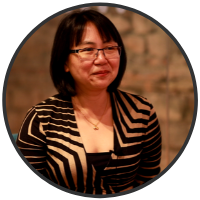
Joyce Lim is a Consultant Pediatric Cardiologist based at Alder Hey Children’s Hospital.
Interviewed at 3DMedLIVE 2019: 3D printing in surgery, Lim shares her thoughts on female role models within her area of surgical specialism.
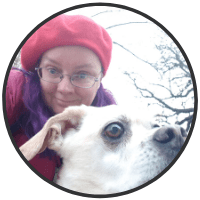
Candice Majewski
I am a Senior Lecturer in mechanical engineering at The University of Sheffield, with a teaching and research focus on additive manufacturing (AM)/3D printing. My passion for this area was inspired by a guest lecture during the final year of my undergraduate degree, which instantly made me realize this was what I wanted to do with my life. Much of my work centers around understanding and optimizing the interactions between materials and processes in AM processes involving powdered plastics – you can tell how excited I am by AM and its possibilities, as I even had my wedding bouquet produced using one of our processes!
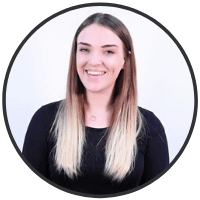
Georgi Makin
I am the Senior Editor for 3D printing in medicine website, 3DMedNet. 3DMedNet is a free, 3D printing community website for the sharing of expert insights and the latest news covering all aspects of medical 3D printing. Through special features, interviews, webinars, podcasts, videos, news coverage and a two-day inaugural conference, 3DMedLIVE, 3DMedNet aims to progress the field to the next level facilitating collaboration and multidisciplinary approaches to modern challenges. I have worked in science communication since 2016 and was previously Editor for industry publication, Bioanalysis Zone. I regularly report on the latest developments from around the world, am an Ambassador for multiple women in science initiatives and am passionate about diversity and inclusion in STEM.
Lorna Marson
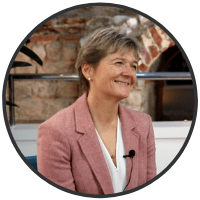
Lorna Marson is rofessor of Transplant Surgery at the niversity of Edinburgh, and onorary Consultant Surgeon at t e Royal Infirmary of Edinburgh (UK) arson held a Clinician Scientist Award from the Academy of Medical Sciences/ Health Foundation from 2003–2008 and continues to work in clinically relevant resear h in renal transplantation, with translation of a novel agent from bench to bedside. he is immediate Past-President of the British Transplantation Society, and has held senior roles in regional surgical training. Lorna is interested in how novel technologies are likely to impact on the future ransplantation and surgical training. he was member of the Commission for the Future of Surgery (2018), sponsored by the Royal College of Surgeons of England.
Interviewed at 3DMedLIVE 2019: 3D printing in surgery, Marson shares her thoughts on working with networks of women in STEM within her surgical specialism, as well as what contributions she is able to make towards progression of women in STEM initiatives.
Developed in partnership with:
The opinions expressed in this feature are those of the interviewees and do not necessarily reflect the views of 3DMedNet or Future Science Group.
